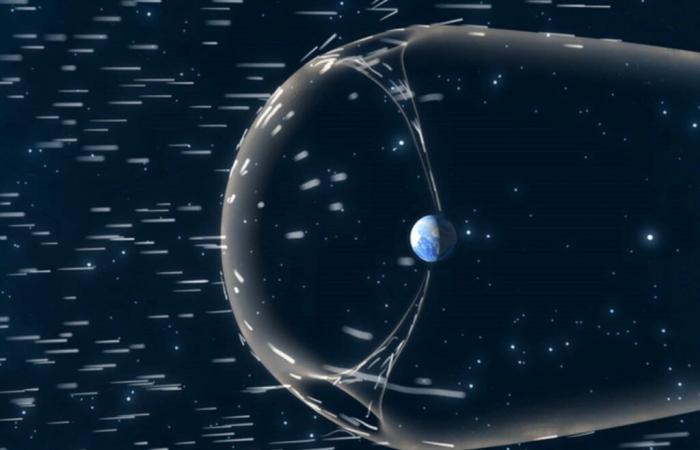NASA’s Tracers mission will seek to understand how the solar wind impacts the Earth’s atmosphere NASA is prepared to launch the tracers mission (for its acronym, Tandem Reconnection and Cusp Electodynamics Reconnaissance Satellites), a key scientific initiative to better understand the interaction between the sun and the earth.
NASA’s Tracers mission will study in depth the magnetic reconnectiona phenomenon that occurs when the solar wind collides with the earth’s magnetic field, generating visible and hidden effects on the planet’s atmosphere.
The Magnetic reconnection It occurs when the solar wind – a continuous current of loaded particles emitted by the sun – interacts with the earth’s magnetosphere, causing the magnetic field lines to disconnect and reconnect. This process releases large amounts of energy, which can cause natural phenomena such as polar auroras, to affect technological systems such as satellites, electrical networks and GPS communications.
Understand in depth How magnetic reconnection works It will allow scientists to anticipate the effects of space climate and design better protection systems for spatial and terrestrial infrastructure.
Twin satellites in space
To study these phenomena, NASA will send two twin satellite to space in the coming months of 2025. Tracers satellites They will fly through a specific area of the Earth’s atmosphere known as the polar cusp. This region is located where the Earth’s magnetic field opens towards space and allows solar particles to penetrate more deeply in the atmosphere.
By crossing this area, Two Twin Space Saves of Traacers will collect detailed data on energy and the particles that enter from space, allowing to observe the magnetic reconnection just where it occurs.
The satellites will be placed in a synchronous orbit with the sun, which means that they will constantly pass on the diurnal side of the earth. This configuration of NASA satellites is key to accumulating thousands of reconnection events during mission’s life.
As it is two ships flying in formation, Tracers will allow simultaneous data to compare from two different points, which will help to understand how magnetic reconnection changes and evolves over time.
Tracers satellites will not work alone. The mission is designed to complement other scientific research from NASA and American universities. One of these is the Magnetospheric Multi Mission (MMS), which also studies magnetic reconnection but from regions farthest from the earth.
In addition, other missions such as Punch (Polarimeter to Unify The Corona and Heliosphere) and Ezie (Electrojet Zeeman Imaging Explorer) will be in the same land low orbit, observing the solar wind and its effects. The integration of data between Tracers, Punch and Ezie will provide a more complete vision of how solar energy flows towards the earth and how it is distributed through the magnetosphere and the atmosphere.
The scientific instruments that will be aboard the satellites have been developed by researchers from the University of California in Los Angeles and the University of California in Berkeley, who will be responsible for measuring changes in electric and magnetic fields during reconnection events.
With the tracers mission, NASA takes a crucial step in the understanding of the space climate and its impact on Earth. This knowledge will not only help improve early alert systems in front of solar storms, but also to protect the technologies that we use daily and that depend on the space environment, such as satellite navigation, telecommunications and space flights.
Published: 3/5/2025






